This is the third post in a short series about using the Ansel Adams’ Zone System with digital cameras. The series starts here. Warning: this post assumes at least a nodding familiarity with the Zone System, as described in Ansel Adams’ The Negative (do yourself a favor and get at least the 1981 edition), and in many other places. I have been trying to demonstrate that the Zone System as practiced by Adams, when applied to current digital cameras, is at best not applicable, and at worst inimical to image quality.
I have received a comment that, although the original AA Zone System may not be applicable to digital cameras, there are modifications to it that make it appropriate and useful. The commenter referenced Chris Johnson’s The Practical Zone System for Film and Digital Photography, Sixth Edition. I got a copy have some comments of my own.
First, some general comments. Chris is a well-respected authority on the original Zone System, and the book is in general well-written. However, he doesn’t seem to understand some of the technology in current digital cameras, and there are some errors and oversights that I will mention. The publication date of the book is 2017, so it should be up to date, but perhaps the last revision was not a thorough one — the screen shots look quite dated.
Most of the book is devoted to the film version of the Zone System. Chapter Ten is entitled The Zone System and Digital Photography, and is the place where the AA’s techniques are modified for digital cameras. The discussion looks quantitative, but you will see that the diagrams are not accurate at all, so the material is really more conceptual in nature. Since the Zone System is itself quantitative — that’s the whole point! — the nature of the discussion masks the fact that the numbers just don’t add up.
In the part on similarities and differences, Johnson says that there are four basic steps shared by chemical and film photography: ISO Selection, Exposure, Processing, and Printing. I’ll agree about the last three, but not about the first. Modern CMOS digital cameras (and CMOS is getting to be the only game in town) are pretty close to ISO-less. By that I mean that the input-referred read noise is not highly dependent on the ISO setting of the camera. And even in cameras that aren’t ISOless, for a given exposure the photon noise, which is the bulk of the noise in most images, is not dependent at all on the ISO setting. Johnson says: “…using higher ISO speeds with digital cameras adds what’s call noise…in the shadow areas of your image”. But in fact that noise is going to be pretty much the same if you crank up the ISO setting on the camera and process to darken the shadows or if you lower the ISO setting and process to boost the shadows.
Thus, choosing the ISO setting should not be fundamental to the process of exposing. In fact, choosing the ISO setting first, as Johnson recommends, puts the cart before the horse. I recommend deciding on the exposure for base ISO, and then working from there. An exception should be made for cameras with dual conversion gain, in which case you should try base ISO, and if the exposure is far more generous than is practical, switch to the lowest ISO setting with the higher conversion gain and calculate the exposure for that.
In the Exposure section, Johnson notes that, as I’ve noted before, the rules for digital exposure are essentially the opposite of that for film. He also correctly notes that exposure meters are not today calibrated for 18% gray, but closer to 12%.
Printing is quite different in the digital workflow, and Johnson points that out and explains.
Then there is a long section about digital photography that has nothing to do with the Zone System: pixels, resolution, precision (which Johnson calls “bit depth”, a 90’s word for a concept that goes back at least to WWII). There is a long discussion of scanning.
Then we get to the relationship of the values in an 8-bit gamma-compressed file (that’s assumed, although Johnson never specifies that nor the gamma he’s using) and the Zones. He maps the values [0,25.6) to Zone 0, and so on up to Zone IX, which is (229.4,255]. Note that Zone X is missing. If we take the approximate middle values of the Zones indicated, we get 13, 38, 64, 90, 115, 141,166, 192, 218, 243. With either a gamma of 2.2 or one of 1.8, Johnson’s mapping of the Zones is wildly different from the true values encoded in the files, with in both cases Zone V less than 2 stops down from Zone IX, and huge steps in brightness in the lower Zones.
This is a fanciful, and highly inaccurate, way of forcing the Zone System on digital photography.
What are the actual values of the centers of the Zones in an RGB color space with a gamma of 2.2?
You can see that Zone V is at the top part of the lowest quartile of the range.
Using the sRGB nonlinearity, which has a linear portion that affects Zones 0 and I:
There is a discussion of pushing and pulling in digital development that makes it look like its effect on Zone placement in the histogram is linear. In fact, it is highly nonlinear:
There is a long discussion of posterization and precision that completely ignores dither, and therefore arrives at misleading conclusions. This is folowed by a discussion of how to avoid banding (Johnson’s word for posterization) by manipulating exposure. In fact, in modern cameras, there is almost always plenty of dither due to dark-field noise, and posterization is hardly ever an issue.
Then Johnson — and this is in a chapter on applying the Zone System to digital phography — abandons the Zone System completely and advises the reader on how to get the right exposure using the histogram. The histogram is pretty much the antithesis of the Zone System, in that you can’t tell by looking at the histogram which tones cone from what part of the scene.
Steping back into the Zone System, Johnson advises placing a Zone VII highlight on Zone VII, just as with film. This is only good advice if you define the Zones as I did above, not as Johnson did, and as the light meter in your camera does. His definition will result in clipped highlights in a full-range scene.
I’ve focused on the deficiencies in Johnson’s book, but the parts that talk about digital photography in general as opposed to trying to fit it to the Procrustean Bed of the Zone Sysytem, are really pretty good, if a little dated.
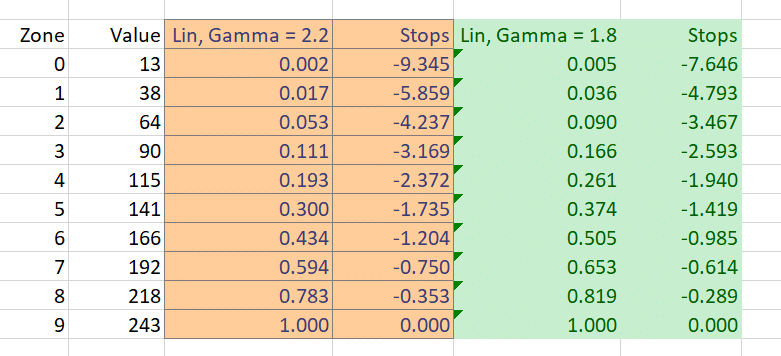
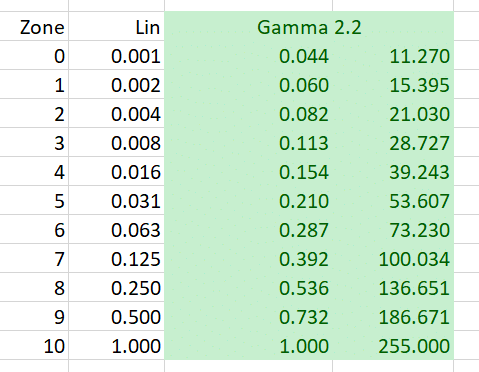
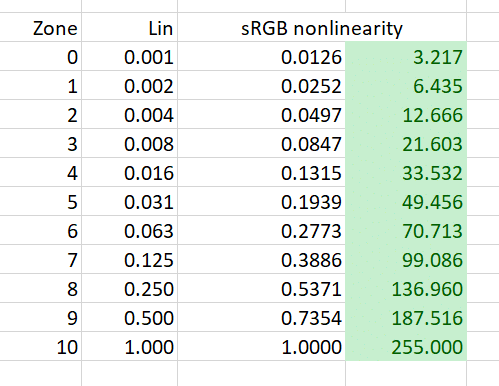
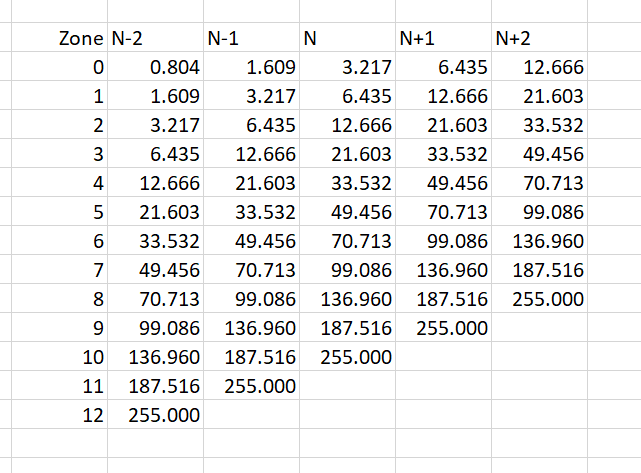
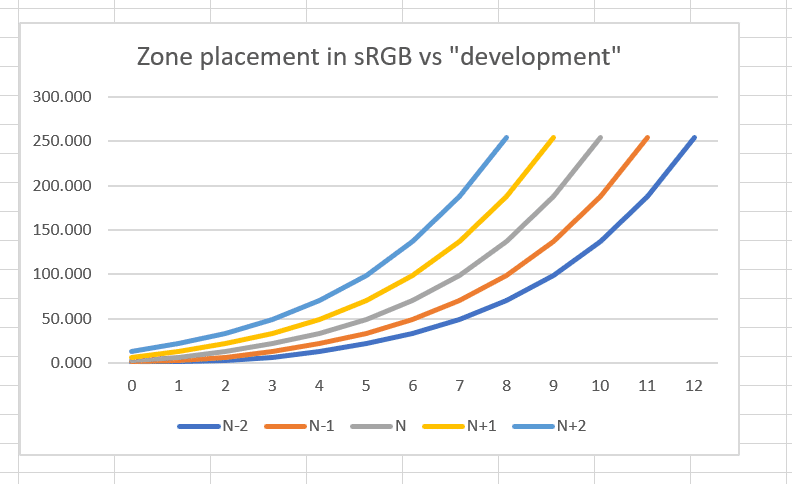
Nate Weatherly says
Hi Jim!
You say, “…choosing the ISO setting should not be fundamental to the process of exposing. In fact, choosing the ISO setting first, as Johnson recommends, puts the cart before the horse. I recommend deciding on the exposure for base ISO, and then working from there. “
I haven’t looked at Chris’s book, but isn’t “deciding on the exposure at base ISO” the same thing as what analog photographers do when they choose their own “personal film speed” based on their processes, materials, and stylistic choices? i.e., a film’s nominal ISO is 400, but the photographer sets his handheld meter at iso 200 because that gets him the results he desires.
I suppose that, ideally, the digital photographer would be choosing a different iso for every shot based on highlight retention, but practically there are times when it’s advantageous to chose a consistent iso for metering (one for 100 and one for 640 perhaps) to give your work consistency and dramatically streamline post processing.
JimK says
My point is that for most modern CMOS cameras the bulk of the noise characteristics are set when the sensor is designed and that changing the ISO setting on the camera is not a fundamental decision, but a tweak to trade off highlight protection versus, in a small way, shadow noise. The photon noise doesn’t change at all with the ISO setting.
Nate Weatherlyr says
Thanks Jim, that makes sense. It also raises a question for me as I’m really trying to understand exposure in digital images. In brief, to what extent does a sensor’s photon transfer curve correlate to a film’s characteristic curve? I was looking at PTCs the other day and on a whim I decided to overlay my A7RII’s PTC on top of the curve for a Kodak motion picture film. I scaled the axes to match and couldn’t believe it when the curves lined up almost perfectly over the Sony’s 14 stop range, other than the highlights which diverged at the same rate in precisely opposite directions.
Comparing the curves, if I’m understanding correctly, would seem to indicate that if one were to set the A7RII to ISO 100 but EXPOSE at about ISO 1250, you would end up with linear data that very closely matches the density characteristics of an ISO 400(ish) speed film, within an exposure range of about -8 to +6 relative to the mid tone. I assume that it would be a bit more complicated than that, because of black point and white point adjustments, but if I’m trying to get the most “film like” response from a he sensor am I on the right track?
Cecelia Campochiaro says
Jim,
Thank you for your blog and all the interesting information – I really appreciate it. Please tell me if I’m thinking correctly about how to use ISO. I use a m43 camera handheld with excellent IBIS, but even with the excellent IBIS there are practical limits to the minimum shutter speed I can use and achieve sharp images. This is my approach:
1. Keep AutoISO on all the time with a minimum shutter speed set to 1/6s, and let the ISO rise in dim situations
2. Always in aperture priority mode, choose the f-stop in the moment based on my aesthetic goals for the image
3. Use the exposure compensation dial in the moment l to capture the image the way I want to render it. (I use the EFV with grayscale rendering, even for color shooting, because I can see the exposure better in B&W.)
If the subject is moving, I might change the minimum shutter speed to a faster setting, which means more images at higher ISOs. I don’t let the ISO exceed 3200.
I find this approach very freeing, as it really only requires 3 decisions beyond framing: f-stop, focus location, and exposure compensation. Would you change anything?
Thanks in advance,
Cecelia
R. says
Dear Sir.
Thank you for yours contribution about The Zone System and digital cameras.
Sad, but most likely realistic to not apply the Zone System in an accurate manner. Analogue and digital are two separate media (and you have shown). Calibration of your equipment is always necessary! I would suggest to look at the System from Sir Edward Lachman.
For information go to: https://www.elzonesystem.com
I believe that on this matter, it maybe (partially) is possible to attend the Zone System into the digital age. Cheers, R.